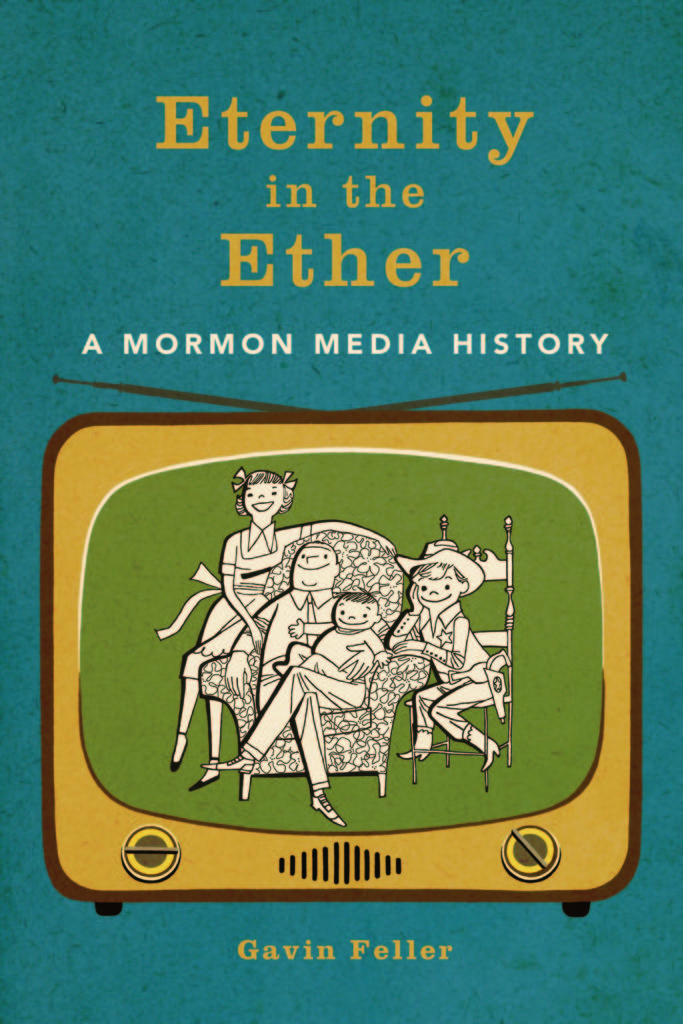Title: Eternity in the Ether: A Mormon Media History
Author: Gavin Feller
Publisher: University of Illinois Press
Genre: Religious non-fiction, academic
Year Published: 2023
Number of Pages: 193
Format: Paperback
ISBN: 9780252086854
Price: $25
Reviewed by Conor Hilton for the Association for Mormon Letters
Gavin Feller’s Eternity in the Ether: A Mormon Media History is an interesting book that brings together various academic disciplines and fields together—weaving communication studies, religion, and history into one manuscript. The interdisciplinary approach and robust theoretical background that Feller uses make the book dense and academically lively. It also means that if you’ve come to the book hoping for any one of those things, you will likely be left somewhat wanting by Feller’s approach and interests.
Feller’s core argument follows in the footsteps of Terryl Givens and Armand Mauss—essentially that there is a core tension or paradox at the center of how the Church of Jesus Christ of Latter-day Saints approaches and uses media. In essence, that tension is “to be in the world, but not of the world”. Feller traces how this tension plays out throughout church history across a wide range of media—starting innovatively with the project of Zion, moving to radio, TV, and then the internet.
The focus of Feller’s work is the institutional church, with some minor exceptions throughout, mostly used to provide the necessary context to the actions and choices of the institutional church. Feller is explicit about this focus in the introduction and has sound reasoning for doing so. I am personally quite interested in what would happen if you took Feller’s arguments and historical trajectory and looked instead at the actions and work of Mormons outside of the institution. Feller seems to share this interest, gesturing at several points throughout the book to places where future scholars could extend, complicate, or even challenge some of the ideas he puts forward.
Eternity in the Ether draws on a wide array of existing Mormon scholarship and primary documents to present an argument that is filled with interesting little tidbits—that KSL was formerly called KZN, understood as K-Zion, for example. Or a hilarious and interesting article in The Instructor, an official church periodical, entitled “Dos and Don’ts for Showing TV Courtesy” written by the KSL-TV program director in 1959 (Feller includes some of the images from the original article in the book). Or a discussion of how the church decided to first allow tobacco and alcohol advertising on KSL. Or how FamilySearch was a central part of rehabilitating the internet away from a one-to-one equation with pornography for the institutional church.
If these sorts of details have you wanting to know more, then Eternity in the Ether: A Mormon Media History is for you. The book is primarily written for an academic audience, demonstrated by its rigorous theoretical framework and variety of interdisciplinary influences. Those interested in the history of institutional uses of media will be particularly rewarded by Feller’s work. And those wanting to do scholarship on Mormonism and media likely have something to learn and engage within the book. I hope to see many folks extending, complicating, and challenging Feller’s work, and look forward to reading their and Feller’s future efforts.

